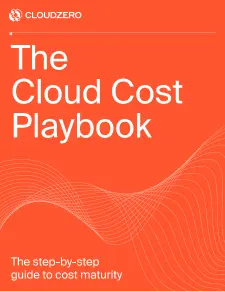Kubernetes has reshaped how teams build and scale infrastructure, but it’s also made cost visibility a lot harder. For platform engineers, SREs, and FinOps leads, breaking down shared cluster costs, understanding per-team usage, and driving efficient resource allocation is still a major challenge.
That’s why one CloudZero webinar with Umesh Rao, Director, Tech Enablement and John Hashem, Senior Sales Engineer, stood out. While nominally a product walkthrough, the session offered broader, vendor-agnostic insights on how modern teams are approaching Kubernetes cost management especially in multi-tenant, fast-moving environments.

As Umesh noted early on:
“A lot of folks are getting asked monthly or quarterly about K8s cost spikes, and for many, it’s still hard to answer.”
Below are five key takeaways from the session that go beyond the CloudZero platform and point to emerging best practices across the industry.
1. Give Engineers Business Context With Cost Data
Most optimization tools stop at technical metrics: CPU, memory, and maybe namespace. But that’s not enough. If you want engineers to take action on cost insights, they need to understand the why; who owns it, what it supports, and how it connects to the business.
That was the core message from John during his walkthrough of a workload-level optimization:
“It really gives engineers business context — not only to take action, but also prioritize and deliver value to the business.”
Instead of vague alerts about over-provisioned nodes, teams need recommendations that are clearly tied to business units, product features, or customer outcomes. Adding that context unlocks not just actionability, but accountability as well.
This kind of dimension-driven reporting is particularly valuable in Kubernetes environments, where resource abstraction makes it tough to pinpoint ownership. If your cost data doesn’t align with the way your teams work and ship software, it’s just noise.
Related read: 12+ Kubernetes Labels Best Practices To Apply ASAP In 2025
2. Allocation Is Hard, Especially For Shared Resources
A recurring pain point in Kubernetes cost management is the “everything goes to shared” bucket. Even mature teams often struggle to allocate more than 10% of costs directly to workloads or namespaces. The rest gets dumped into unallocated spend, making true accountability impossible.
Umesh and John both acknowledged this as a real-world challenge, not a sign of failure.
“This is kind of the shared resource allocation and attribution advanced model that we have,” Umesh explained. “We bring in telemetry from other sources — API usage, DB calls, whatever’s available — and proportionally distribute costs across namespaces.”
This is a critical mindset shift. Instead of obsessing over perfect tags or labels, teams can use external signals such as observability platforms, usage logs, or databases to drive a fair, data-informed allocation model. It’s not perfect, but it’s vastly better than letting shared costs obscure where your money is going.
The big takeaway: Kubernetes allocation is messy by default. You need a multi-source strategy to make it meaningful.
3. You Don’t Need Perfect Labeling To Get Started
Every Kubernetes cost conversation eventually runs into the labeling problem. What do you do when your clusters are full of unlabeled workloads — or worse, inconsistent or outdated labels?
The conventional wisdom says you need to enforce strict labeling policies with mission controllers. But John Hashem offered a more pragmatic approach:
“We’re not going to go tell you to deploy a mission controller and block everyone from deploying without a label. It’s a little bit easier than that.”
Instead, CloudZero’s model relies on metadata inference: pulling in workload names, namespace names, and even deployment naming conventions to group resources into meaningful dimensions like teams, features, or customers.
This rule-based approach helps teams bootstrap their cost allocation without stalling deployments or enforcing brittle policies. It’s not perfect, but it’s fast, flexible, and often good enough to uncover major visibility gaps.
The key insight? You don’t have to wait for perfect tagging hygiene to start understanding your Kubernetes costs.
4. Use Percentile-Based Metrics To Avoid Spiky Noise
One of the trickier aspects of Kubernetes optimization is dealing with spiky workloads — especially in environments with bursty behavior like CI/CD pipelines or JVM-based apps with expensive startup cycles.
John addressed this directly in the Q&A:
“We use the 95th percentile to help eliminate those large spikes or one-times during the initial lifecycle. Java’s a popular one — we see the high initial start time, then it levels off.”
This nuance matters. Many traditional optimization tools rely on averages or peak usage, which can mislead engineers into thinking they’re under- or over-provisioned. Using 95th percentile metrics offers a more reliable view of typical resource usage — filtering out anomalies while preserving critical patterns.
The lesson: Optimization recommendations need to reflect how your workloads actually behave — not just what they spiked to once.
5. Track Cost Per Job, API Call, Or Feature — Not Just Spend
Raw cloud cost doesn’t tell you much on its own. What matters is what you’re getting for it. One of the most forward-looking parts of the webinar was the focus on unit economics. This means metrics like cost per API call, cost per job, or cost per customer feature.
John walked through several examples, including a cluster running CI jobs:
“[For example], we’re spending about $157,000 a month, supporting a little under a million jobs. But the real metric we care about is cost per job.”
He later showed similar breakdowns for cost per API call by customer and even by feature. This level of granularity gives teams powerful levers to improve efficiency without defaulting to cost-cutting.
It’s a shift from asking “Why did our bill go up?” to asking, “Are we spending the right amount to deliver this service?”
For platform and FinOps teams, unit cost metrics are the bridge between infrastructure and business value.
From Cost Cutting to Cost Context
Reducing spend isn’t the only focus in Kubernetes cost management. K8s cost management also involves increasing visibility, accountability, and efficiency in a system that’s inherently complex and shared. The webinar made one thing clear: you don’t need perfect data, strict policies, or massive reengineering to get started.
Instead, focus on giving engineers the context they need, aligning cost to business outcomes, and using usage-aware, telemetry-rich strategies to improve how you allocate and optimize spend.
Whether you’re just starting to get control of Kubernetes costs or trying to evolve from tagging chaos to actionable unit metrics, these takeaways offer a practical path forward.








